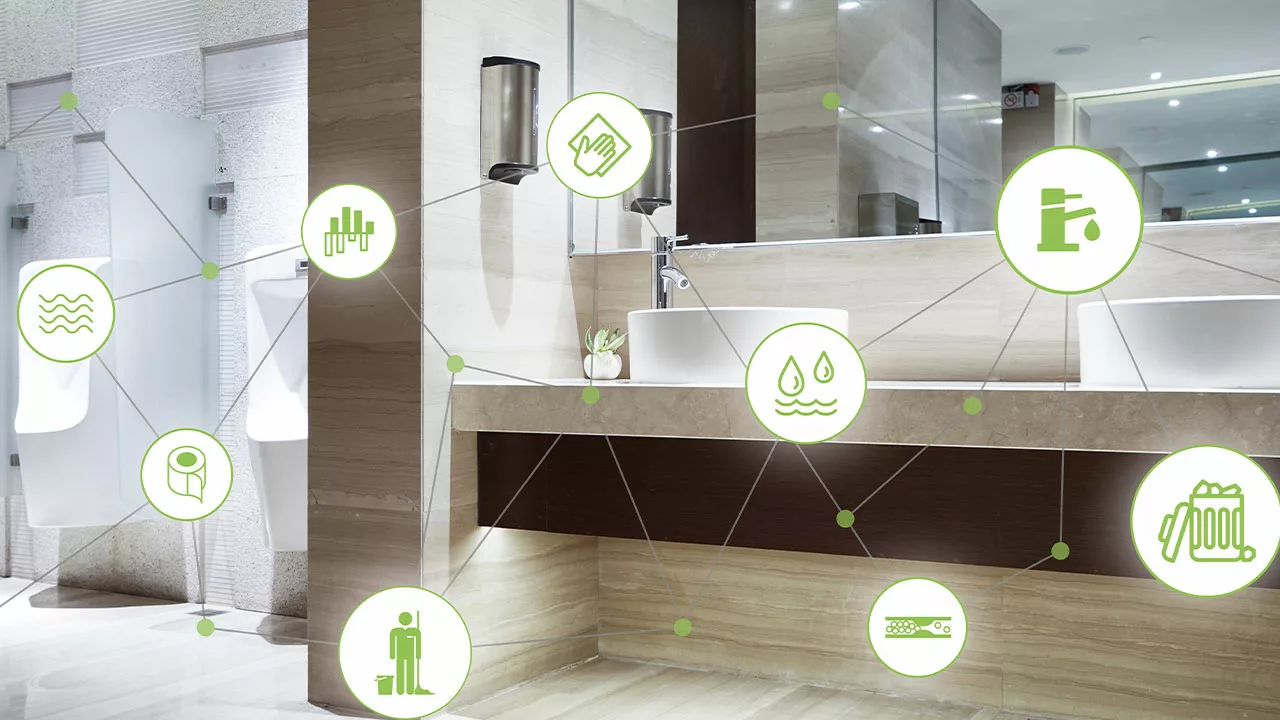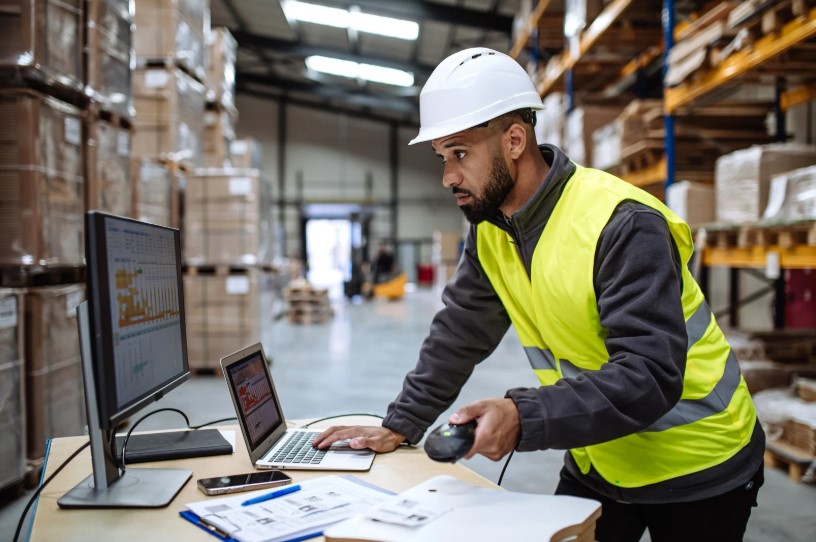Facility operations often overlook restrooms as areas of innovation. Yet these essential spaces are a daily touchpoint for employees, customers, and visitors—and their cleanliness, functionality, and sustainability significantly affect perceptions of an entire building. This is where a smart toilet management system becomes a game-changer.
As building technology evolves, facility managers are embracing IoT-based solutions to streamline operations, cut costs, and enhance user experiences. A smart toilet management system goes beyond cleanliness—it introduces real-time data, predictive analytics, and automation into washroom operations, transforming them from reactive to proactive.
What Is a Smart Toilet Management System?
A smart toilet management system is an intelligent platform that combines IoT sensors, cloud-based software, and AI-driven analytics to automate and optimize restroom maintenance. By monitoring occupancy, supply levels, and hygiene conditions in real time, these systems offer facility managers actionable insights to enhance performance.
The core of a smart toilet management system includes motion sensors, humidity detectors, odor monitors, and usage counters. These tools provide a constant stream of data that eliminates guesswork. The result is cleaner restrooms, better resource allocation, and improved satisfaction for users.
Key Features of a Smart Toilet Management System
IoT Sensor Integration: Smart toilet systems rely on a network of sensors installed throughout restroom areas. These track variables such as foot traffic, stall usage, dispenser levels, temperature, and air quality—delivering insights that manual checks simply cannot match.
Real-Time Monitoring Dashboard: All sensor data is centralized on a cloud-based dashboard. Facility managers can monitor multiple restrooms across different floors or locations simultaneously, receiving live updates and alerts for quick responses.
Predictive Cleaning Schedules: Instead of fixed time-based cleaning, a smart toilet management system uses occupancy data to trigger cleanings only when needed. This reduces wasted labor while ensuring restrooms are always at their best.
Consumable Tracking: Soap, tissue paper, air fresheners, and hand dryer statuses are monitored automatically. When supplies run low, alerts are sent to the janitorial team, eliminating customer complaints about missing essentials.
Data Reporting and Analytics: Over time, the system builds historical data that can be used to optimize staffing schedules, manage utility usage, and even plan future infrastructure upgrades based on usage patterns.
Benefits for Facilities and Users
Enhanced Operational Efficiency: By automating data collection and providing real-time alerts, a smart toilet management system reduces the need for manual inspections. Staff can focus their attention only where it’s needed most, making operations leaner and more effective.
Resource Optimization: Facilities waste significant water, electricity, and cleaning supplies when restrooms are maintained based on fixed schedules. With data-guided decision-making, consumables are replenished only as necessary, minimizing waste and overuse.
Cost Savings: Over time, labor, water, and supply costs can be dramatically reduced. A smart toilet management system allows managers to analyze usage trends, identify inefficiencies, and make strategic changes that reduce operational expenses.
Improved User Experience: There’s a direct correlation between restroom cleanliness and customer satisfaction. Whether in a mall, office, or hospital, users expect clean, well-stocked, and odor-free restrooms. Smart systems help ensure these expectations are consistently met.
Sustainability and Green Initiatives: With increasing emphasis on ESG goals and sustainable practices, adopting a smart toilet management system demonstrates a commitment to environmental responsibility. These systems help conserve water, reduce carbon footprints, and limit unnecessary cleaning material usage.
How Predictive Maintenance Enhances Restroom Operations
Traditional maintenance operates on a reactive model—responding to complaints or following a fixed schedule. A smart toilet management system introduces predictive maintenance by using AI and machine learning to forecast issues before they occur.
For example, sensors can detect subtle changes in humidity that might indicate a plumbing issue or can identify patterns in soap consumption to anticipate replenishment needs. Over time, the system “learns” usage patterns, allowing for increasingly accurate forecasts that preserve the longevity of restroom infrastructure.
Importance of Data Security in Smart Restroom Solutions
Although restroom sensors do not typically collect personally identifiable information, data security remains a top priority. A robust smart toilet management system must comply with global data protection regulations like the GDPR, ensuring all collected data is anonymized and securely stored.
AST’s Smart IoT Toilet Solution, for example, employs end-to-end encryption and access control protocols. Only authorized personnel can view sensitive data, and the platform is designed to prevent data breaches or unauthorized access. This commitment to privacy ensures that facilities can implement smart systems without compromising trust or compliance.
Applications Across Multiple Industries
Smart toilet management systems are not limited to high-end commercial properties. Their versatility makes them ideal for various settings:
- Corporate Offices: Enhance employee satisfaction and minimize maintenance costs
- Retail Malls: Maintain high hygiene standards with minimal downtime
- Airports and Transit Hubs: Handle high foot traffic efficiently while ensuring cleanliness
- Schools and Universities: Support health and hygiene for large student populations
- Hospitals and Healthcare Centers: Ensure sanitation and compliance with health protocols
Each of these environments benefits from tailored insights provided by a smart toilet management system, making it an essential investment across sectors.
Choosing the Right Smart Toilet Management System Provider
Selecting the right provider is crucial to unlocking the full potential of a smart toilet management system. Key factors to consider include:
- Scalability: Can the system handle multiple buildings or locations?
- Integration: Does it work with your existing facility management software?
- Ease of Use: Is the dashboard intuitive and customizable?
- Support and Updates: Are regular maintenance and upgrades offered?
- Security and Compliance: Is your provider compliant with local and international data protection laws?
A trusted provider like AST combines technical innovation with user-focused service, offering end-to-end support from installation to optimization.
AST Smart IoT Toilet Solution: Leading the Transformation
AST’s Smart IoT Toilet Solution is built with advanced technology, sustainability, and client customization in mind. The system leverages real-time data and AI-driven insights to create cleaning and maintenance workflows that are both efficient and environmentally friendly.
What sets AST apart is not only the sophistication of the technology but also its deep commitment to data privacy, regulatory compliance, and customer success. AST helps facilities move from outdated manual maintenance to intelligent automation that meets the needs of modern operations.
Whether you’re managing a single facility or a global portfolio of properties, AST’s solution is scalable and ready to grow with your needs.
The Future of Smart Restroom Management
The demand for intelligent, data-driven facility solutions is only growing. A smart toilet management system is no longer a luxury—it’s a necessity for businesses that prioritize hygiene, sustainability, and cost-efficiency.
As smart building ecosystems continue to evolve, smart restrooms will become fully integrated into broader IoT frameworks—communicating with HVAC systems, lighting, occupancy trackers, and more. The convergence of these technologies will result in truly autonomous facility management where restrooms self-monitor, self-diagnose, and even self-maintain.
Forward-thinking facility managers who invest in smart toilet technology today are positioning their organizations for smarter, cleaner, and greener operations tomorrow.
Takeaway
A smart toilet management system offers tangible benefits—improving restroom hygiene, optimizing operations, reducing costs, and supporting sustainability goals. Whether you’re running a commercial office, a hospital, or a public venue, this technology elevates your facility management strategy.
To transform your restroom operations with proven technology, partner with a trusted leader like AST and explore the possibilities of intelligent facility management.







